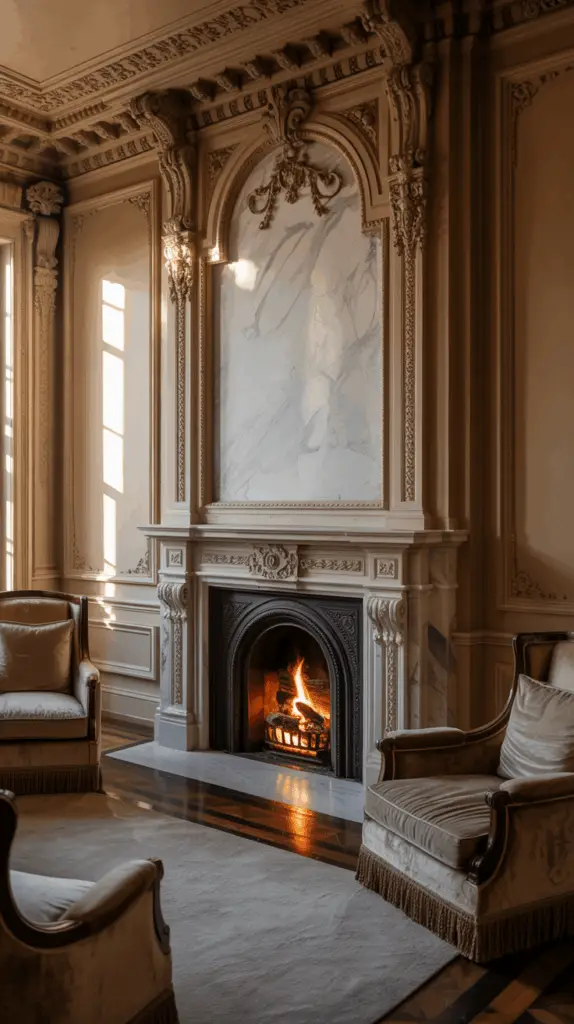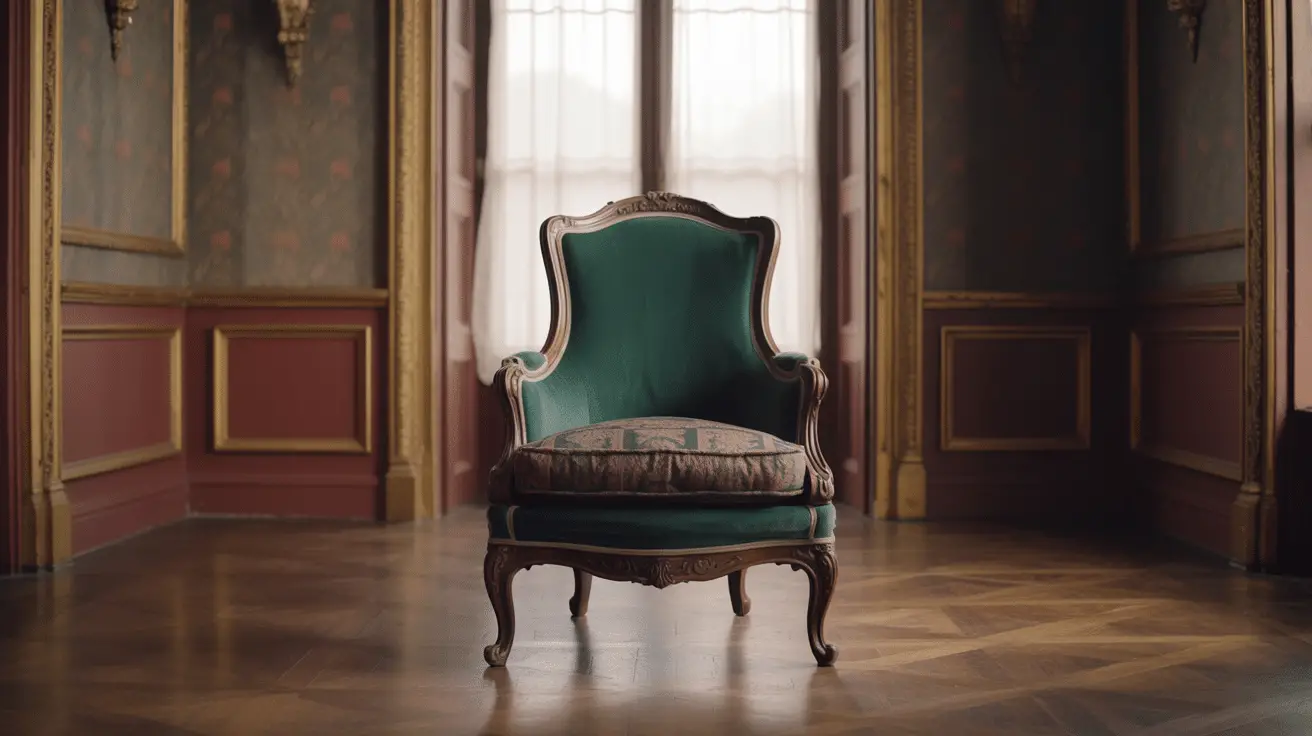Timeless Victorian Living Room Designs for Every Home
Table of Contents
Introduction
Victorian design is synonymous with grandeur, opulence, and intricate details. It’s a style that hails from the reign of Queen Victoria in the 19th century, but its timeless appeal still graces homes today. From rich, bold colors to ornate furniture, Victorian living rooms have an unmistakable charm that elevates any space. However, incorporating Victorian elements into your home doesn’t necessarily require a historic mansion or a vast budget. By focusing on key design features, you can bring the beauty of the Victorian era into a modern living room with style and elegance.
Victorian living room designs feature a blend of comfort and luxury, combining warm, inviting spaces with sophisticated architectural elements. Whether you’re remodeling a historic home or simply infusing a touch of Victorian charm into a contemporary space, this design style can be adapted to fit any home. In this post, we will delve into various aspects of Victorian design, from color schemes and furniture selection to fabric choices and decorative accents. You’ll learn how to create a living room that feels timeless, without overwhelming your space.
Let’s explore how to incorporate these classic elements into your home with a few practical tips and design ideas that will work in both large and small spaces.
1. Color Palettes: Deep, Rich Hues That Reflect Victorian Elegance
One of the most distinctive features of a Victorian living room is its rich, bold color palette. Victorian design doesn’t shy away from deep, luxurious colors like deep reds, emerald greens, navy blues, and even rich purples. These hues create a feeling of warmth and sophistication, enveloping the room in a sense of coziness and class. If you’re looking to embrace Victorian elegance, start with your color palette.
While you may be tempted to go for lighter, airier shades in your living room, embracing the rich tones of the Victorian era can help set the mood. For a modern twist, balance out dark hues with lighter accent walls or accessories, such as throw pillows, light curtains, or metallic accents.
To create the perfect Victorian color scheme, pair your dark, jewel-toned walls with cream or gold trim to give the room a classic look. Consider using shades like deep burgundy, forest green, or royal blue to establish an atmosphere of luxury. Accents of gold or brass, often seen in light fixtures or furniture, will further enhance the richness of the space.
Table: Victorian Color Palette Ideas for Living Rooms
| Primary Color | Accent Color | Effect Created |
| Deep Burgundy | Cream or Gold | Elegant, dramatic, and welcoming |
| Forest Green | Brass or Copper | Classic, sophisticated, and calming |
| Navy Blue | Antique White | Rich, deep, and timeless |
| Royal Purple | Silver or White | Regal, luxurious, and refined |
2. Victorian Furniture: Ornate Pieces with Functional Beauty
Victorian furniture is the epitome of craftsmanship and beauty. When designing your living room, the furniture you choose will set the tone for the space. Start with large, statement pieces such as an intricately carved sofa or armchair. Victorian seating often features elaborate carvings on wood and lush, luxurious fabrics like velvet and brocade. Look for antique or vintage-inspired pieces that evoke the same level of opulence, but don’t feel overwhelmed by the idea of purchasing expensive antiques.
For a modern approach, find pieces that are influenced by Victorian design but with a more contemporary silhouette. For example, a sofa with a tufted velvet upholstery in deep jewel tones, or a carved wooden coffee table with brass accents, can fit seamlessly into any living room.
Keep in mind that Victorian design isn’t just about furniture size, but also about the quality and intricacy of the materials used. Opt for well-made wooden furniture with detailed carvings and dark finishes, like mahogany or oak. Adding in a few vintage-inspired side tables or a grand piano can help complete the look.
3. Fabrics and Textures: Luxurious Upholstery and Drapery
The fabric choices in a Victorian living room elevate the design to another level of sophistication. Velvet, damask, brocade, and heavy silks were commonly used for upholstery and draperies during the Victorian era. These luxurious fabrics are perfect for achieving that regal, elegant atmosphere. When selecting fabrics for your living room, look for textured and plush materials that offer depth and dimension.
For the furniture, choose richly upholstered sofas and chairs in luxurious fabrics like velvet or brocade. If these are beyond your budget, consider using slipcovers or throws in similar fabrics to create a similar look. Upholstering furniture in dark colors, such as burgundy, emerald, or navy, enhances the Victorian aesthetic and creates a sense of timeless elegance.
Drapes and curtains are also essential elements of a Victorian living room. Opt for floor-length curtains in heavy fabrics like velvet or damask, which provide a dramatic flair and a feeling of privacy and intimacy. Consider adding a fabric valance or fringe to add further elegance to your windows.
Table: Fabric Choices for a Victorian Living Room
| Fabric Type | Ideal Use | Recommended Color Options |
| Velvet | Sofas, chairs, throw pillows | Burgundy, navy, emerald |
| Brocade | Upholstered furniture, drapery | Gold, deep red, royal blue |
| Damask | Drapes, cushions | Cream, silver, dark green |
| Silk | Curtains, accents | Ivory, lavender, plum |
4. Architectural Details: Incorporating Victorian Moldings and Trim
Victorian homes are known for their architectural details, particularly intricate moldings, wainscoting, and crown molding. These elements provide a sense of refinement and formality, creating an environment that feels both luxurious and historical. While you may not live in a true Victorian home, there are several ways to incorporate these architectural elements into your space.
One of the simplest ways to add Victorian charm is through crown molding, which gives the room a polished, finished look. For an added touch, use decorative molding along the baseboards and around windows and doors. Wainscoting, or wooden paneling that covers the lower portion of the walls, is another common feature of Victorian design that adds both texture and elegance.
For a more dramatic effect, consider adding a fireplace with a grand, ornate mantel. The mantel, whether it’s wood or marble, can be an excellent focal point for the room, bringing together the entire design. Install antique-style mirrors or vintage-inspired art to complete the Victorian look.
Table: Architectural Elements for a Victorian Living Room
| Element | Ideal Placement | Effect Created |
| Crown Molding | Walls and ceilings | Adds height, sophistication |
| Wainscoting | Lower portion of walls | Adds texture and richness |
| Ornate Fireplace | Focal point of the room | Creates a dramatic centerpiece |
| Decorative Trim | Around windows/doors | Enhances elegance and detail |

5. Lighting: Chandeliers and Soft, Ambient Illumination
Lighting plays a crucial role in creating the right atmosphere for a Victorian living room. Traditional Victorian homes were often filled with opulent chandeliers and antique lamps that provided soft, warm lighting. These fixtures added a layer of glamour and warmth to the room, while also serving as beautiful statement pieces.
To create a Victorian-inspired living room, incorporate crystal or brass chandeliers with multiple arms for a dramatic effect. Additionally, use soft, ambient lighting through table lamps, wall sconces, or floor lamps with fabric shades. Choose lamps with brass or wrought-iron bases for an antique feel.
For modern homes, you can still achieve this look by incorporating vintage-style light fixtures. Opt for a chandelier with a vintage finish and crystal accents, paired with vintage-inspired bulbs to create a soft, ambient glow that fills the room with warmth and charm.
6. Decorative Accents: Mirrors, Artwork, and Vintage Finds
To complete your Victorian living room, the right decorative accents are essential. Mirrors with ornate frames, vintage paintings, and luxurious decorative pieces can add depth and interest to the space. Look for antique mirrors with intricate detailing, whether they’re oval, round, or rectangular, as these were common during the Victorian era.
Artwork, whether it’s oil paintings, portraits, or floral still lifes, is another significant aspect of Victorian design. Choose framed art that echoes the period, with bold and rich colors to complement the overall color palette. For smaller accents, vintage finds such as porcelain figurines, brass candle holders, and antique clocks will bring the room together.
Table: Decorative Accents for a Victorian Living Room
| Accent Type | Ideal Use | Recommended Materials |
| Ornate Mirrors | Above the mantel or sofa | Gold or silver-framed glass |
| Oil Paintings | Walls | Traditional themes, bold colors |
| Vintage Clocks | Mantel or side table | Brass or wooden frames |
| Porcelain Figurines | Shelves or tables | Fine china or porcelain |
Conclusion
Incorporating Victorian design into your living room creates an atmosphere of timeless elegance, luxury, and warmth. By focusing on rich colors, ornate furniture, and intricate architectural details, you can transform your space into a sophisticated retreat that still feels comfortable and welcoming. Whether you choose to embrace the grandeur of this historic style or blend it with modern touches, Victorian design offers endless possibilities to create a space that’s both beautiful and functional. With a few key elements and careful attention to detail, your living room can reflect the enduring beauty of the Victorian era.

